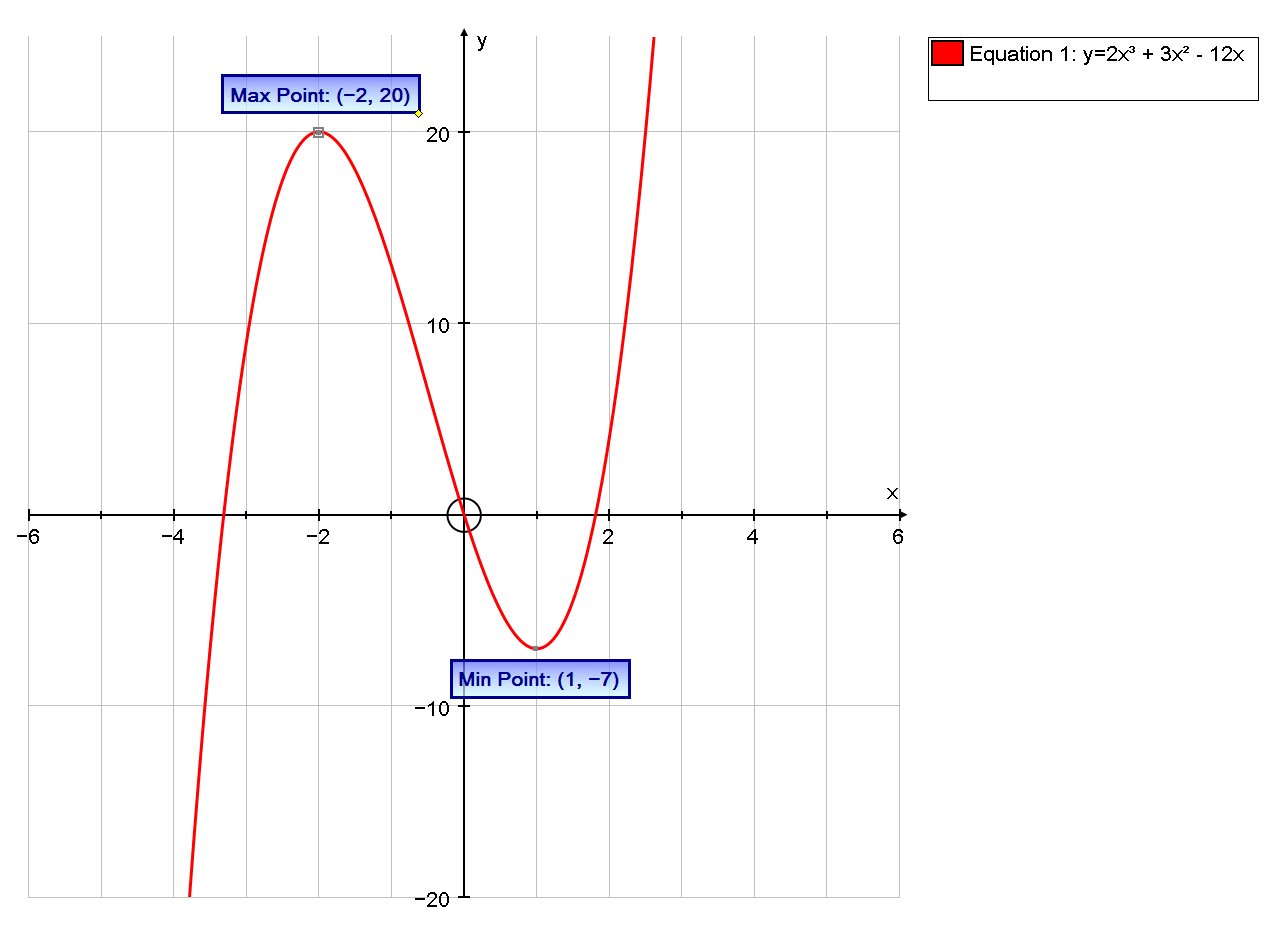How do you find the critical numbers of #f(x)= 2x^3 + 3x^2-12x#?
1 Answer
So the critical points are
Explanation:
We have
To identify the critical vales, we differentiate and find find values of
Differentiating wrt
# f'(x) = 6x^2 + 6x - 12 # .... [1]
At a critical point,
# f'(x)=0 => 6x^2 + 6x - 12 = 0 #
# :. x^2 + x - 2 = 0 #
# :. (x+2)(x-1) = 0 #
# x=-2,1 #
Ton find the y-coordinate we substitute the required value into
So the critical points are
Although this answers the question, let's go a bit further and identify the nature of these critical points by looking at the sign of second derivative, and
Differentiating [1] wrt
# f''(x) = 12x + 6 #
# x=-2 => f''(-2)=-14+6 < 0 # , ie a maximum
# x=1 => f''(1)= 12+6>0# , ie a minimum

Incidental, As this is a cubic with a positive coefficient of

